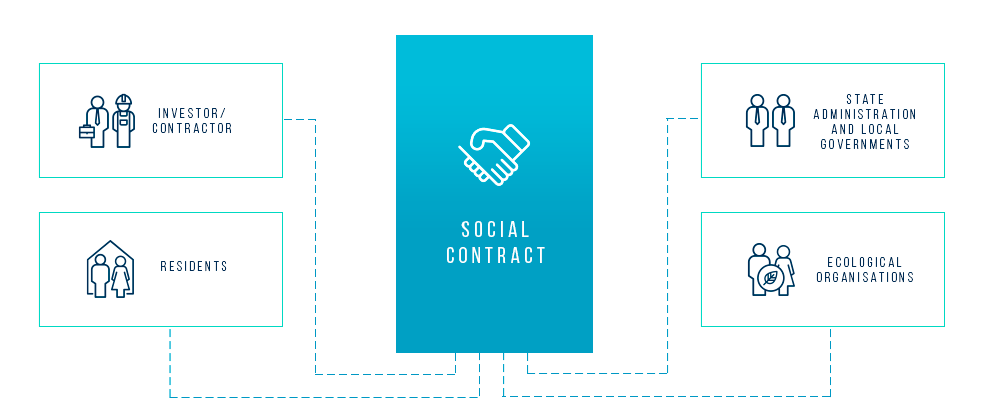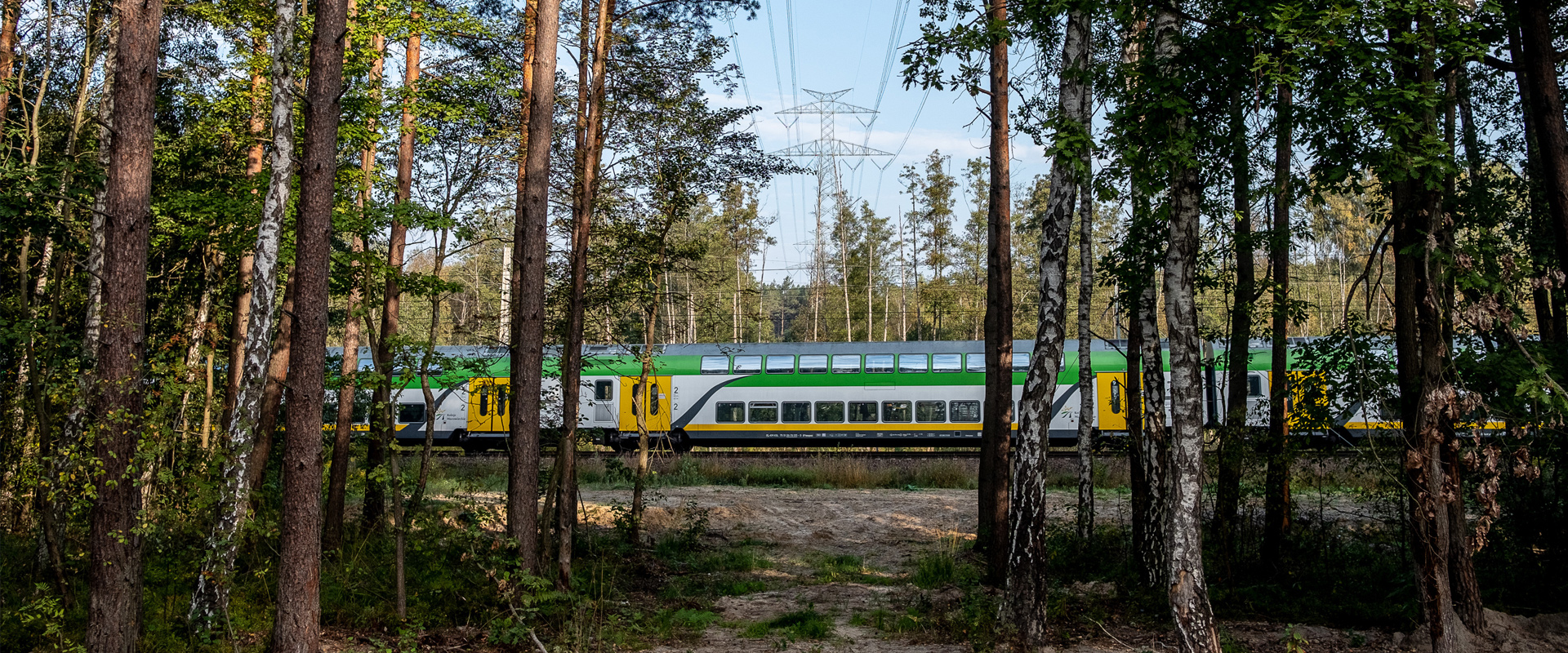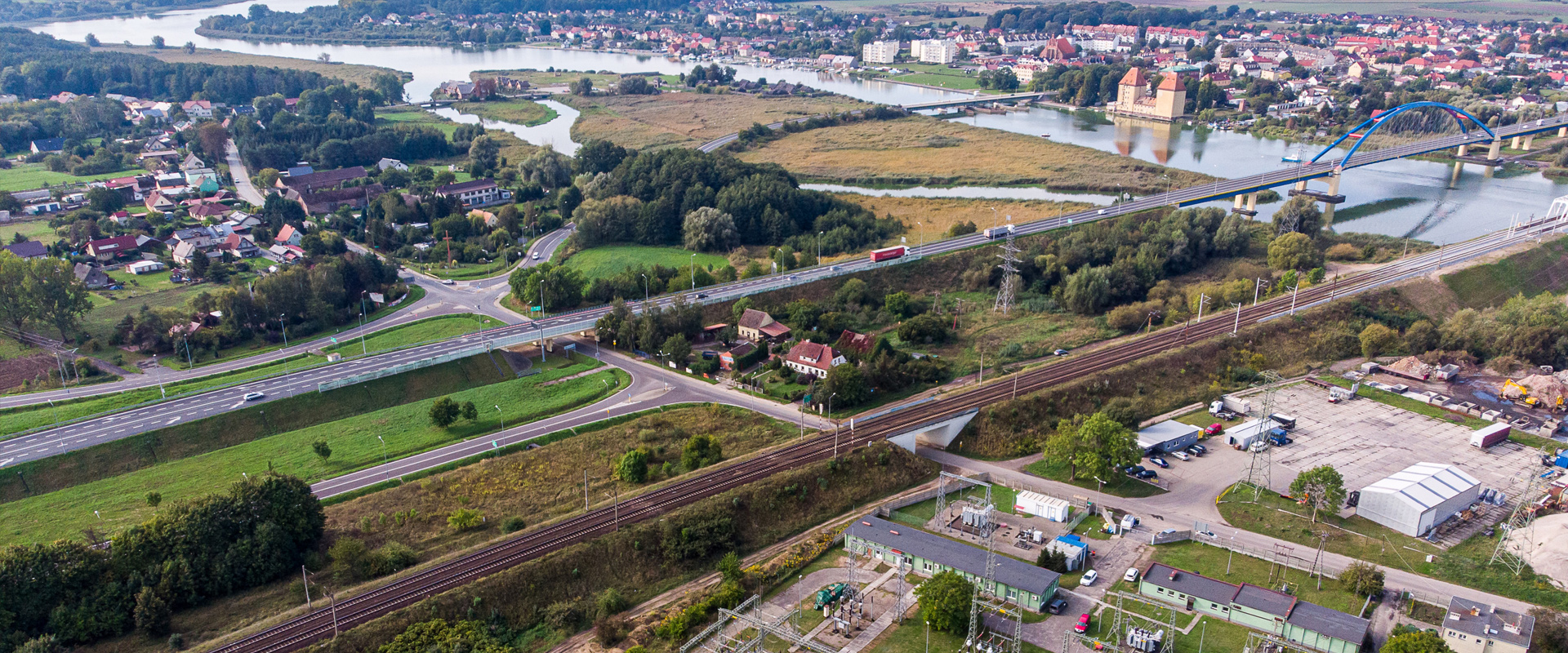GRI 103-1
GRI 103-3
GRI 413-2
Standards and regulations relating to network assets
The impact of our company's operations on the social and natural environment is of particular significance in the case of new-build overhead line projects. The projects are implemented under the latest European standards PN-EN 50341 on designing overhead power lines. We respect all legal acts applicable in Poland in the fields of environmental protection, spatial planning and management, property management, construction law, etc.
European standards
The standards applied in designing and building new lines ensure a high level of operational reliability of lines, a high level of public security, and minimise line impact on the environment. In forest areas, we follow the practice of running line wires over the forest, owing to which tree clearance can be limited to small areas – exclusively to accommodate pylon sites.
For the construction of any line, it is necessary to obtain a decision on environmental conditions, according to which wires or pylons are marked with features visible to birds (representations of predatory birds on lighting arresters or diverter spirals suspended from wires). In compliance with the applicable law, lines are also marked as aviation obstructions.
Devices, instruments and systems installed at substations also meet the requirements of the European standards, which ensures a high level of their operational reliability. Solutions are also used which reduce the environmental impact of an electrical substation, including the natural environment. Each network transformer installed is equipped with an oil tray protecting the environment from oil spillage in the event of failure.
Establishment of rights to real property
In order to regulate legal relations concerning transmission facilities between transmission undertakings and property owners on whose land such facilities are situated, the term "transmission rights of way" was introduced in the Civil Code in 2008. The right of transmission easement defines the extent to which a transmission undertaking can use third-party property on which their transmission equipment is or will be situated, i.e. any structures and facilities forming power lines. The provisions adopted provide the investor with access to facilities, i.e. pylons, wires and substation elements situated on the property in cases of failure, repair and maintenance.
Transmission easement is a limited property right established on a real property in the form of notarial deed. Its scope is recorded in the land and mortgage register of the encumbered property.
According to the applicable law, remuneration and compensation for property value diminution resulting from the establishment of transmission rights of way is paid to each property owner.
Prior to the commencement of work, we have property appraisal reports prepared for property to be developed. The reports provide a basis for the determination of the amount of remuneration and compensation for the plot owner. The payment amount is influenced by factors such as the existing value and use of the property and damage to agricultural land, sown or gathered crops, caused by a part of property being occupied by transmission facilities. Additional compensation is payable for pylon placement. Owners usually receive the first compensation instalment after the civil-law agreement is accepted and concluded. The second instalment is paid after the signing of the notarial deed that provides the investor with access to the land and line. Compensations are also awarded for damage and losses caused in the course of construction and erection works.
In the absence of the landowner’s consent to sign the public utility project easement agreement, following the completion of the entire negotiation process, the negotiation procedure is triggered in accordance with the requirements of Article 124 of the Property Management Act (PMA). However, the administrative procedure is the last resort in the negotiation process – before it is applied, steps are taken leading to a compromise solution.
We do not keep statistics of the number of transmission rights of way agreements concluded with property owners by contractors acting on our behalf.
This concerns thousands of plots every year. We estimate the percentage of agreements concluded at 94-98 percent, while the remaining 2 to 6 percent are administrative decisions issued under Article 124 of the Property Management Act.
Number of people physically or economically displaced and compensation for displacement
As early as the investment planning stage, we endeavour to ensure that our investment projects interfere as little as possible in human life. Wherever possible, we consider several options of project location. We also invite representatives of local communities and local governments to cooperate. We make all efforts to avoid displacement in consequence of our projects. In 2018, no case of displacement occurred.


















